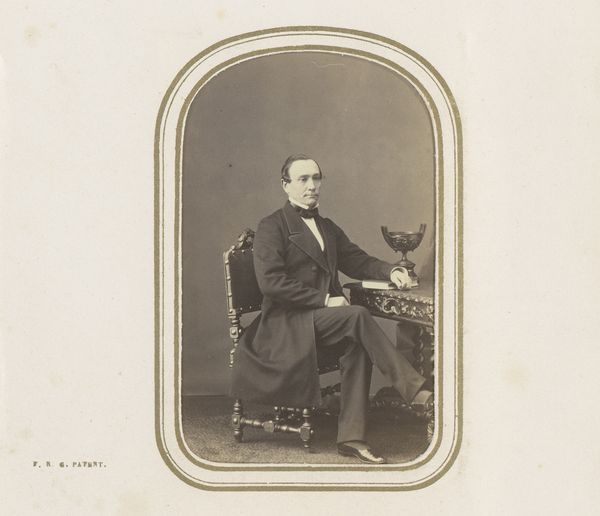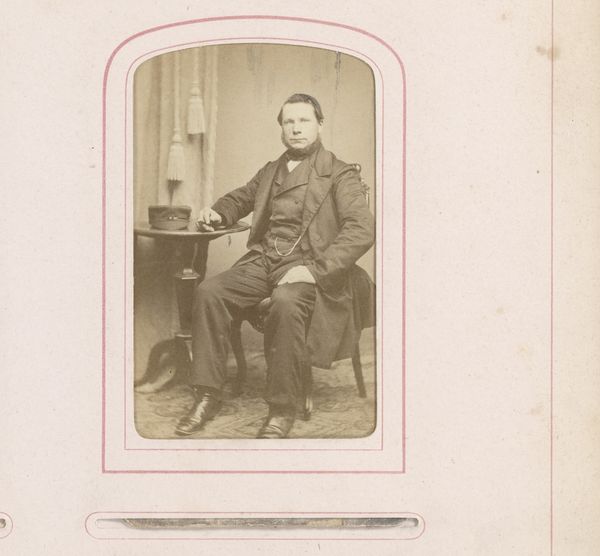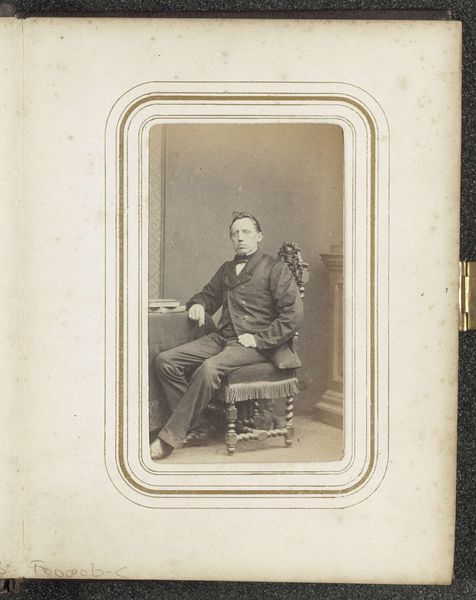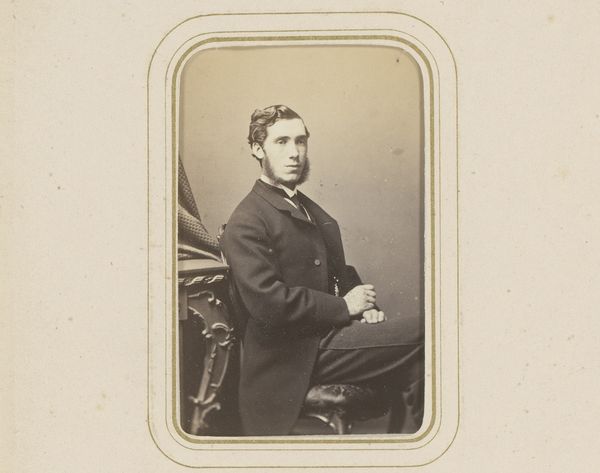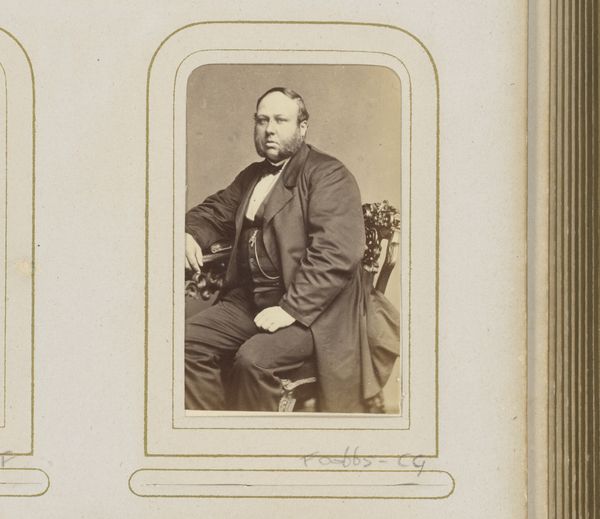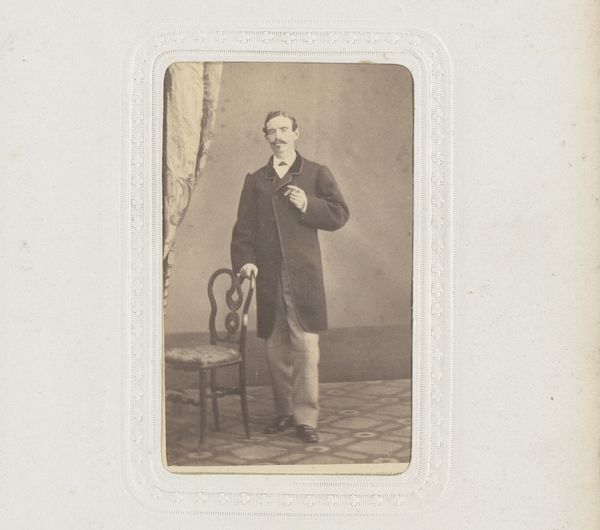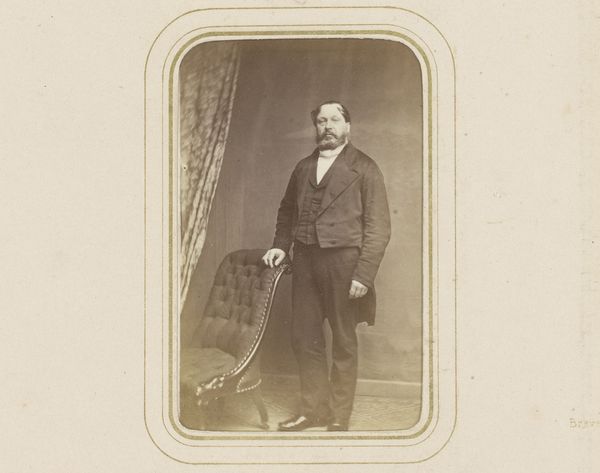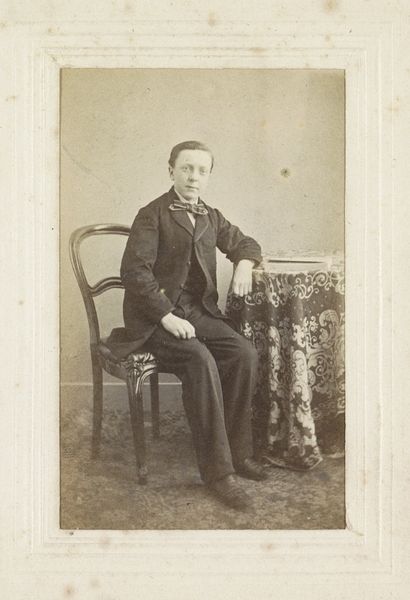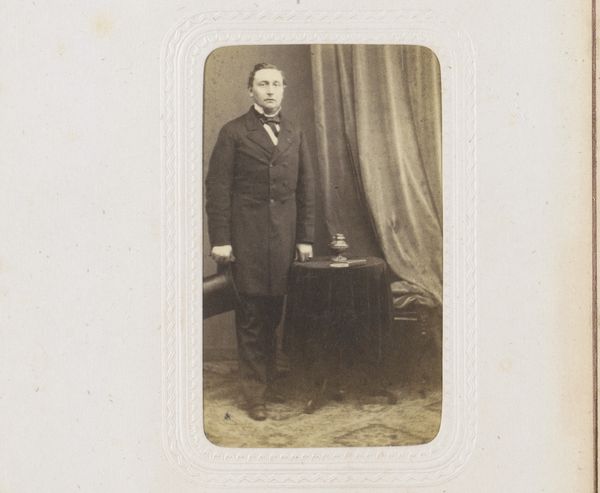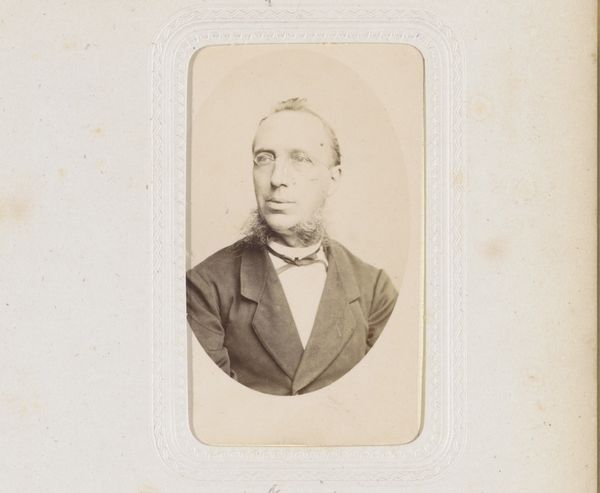
photography, albumen-print
#
portrait
#
16_19th-century
#
photography
#
historical photography
#
19th century
#
albumen-print
Dimensions: height 82 mm, width 50 mm
Copyright: Rijks Museum: Open Domain
Editor: This is a photograph titled "Portret van Herman Jan Rahusen," created before 1875 by Wegner & Mottu. It's an albumen print, a very early type of photographic process. The man seems very serious. What compositional elements stand out to you? Curator: The composition presents a fascinating study in contrasts. Consider the textures: the smoothness of his skin against the ornate detailing of the chair. How does the sharp focus on his face interact with the softer background, guiding the eye? Editor: I see that now. The chair really pops, almost like a character. And the background *is* soft, sort of blending away. It looks intentional, like the background wallpaper almost becomes part of the backdrop for a stage. Does the subject’s attire inform the way the viewer perceives him? Curator: Absolutely. Reflect on the interplay of dark and light in his clothing and surroundings. Notice the almost palpable somber mood this engenders in the viewer. Does the tight framing—the careful arrangement of body within the frame, further the formal severity you identify? Editor: Yes, it emphasizes his stature. I see how the details build upon each other, but I also notice what's not there, the stark background in the negative space behind the portrait. Curator: Precisely! Consider how that empty space frames and isolates, paradoxically emphasizing the subject and, perhaps more profoundly, the technology and materiality behind its execution. This print serves as an intersection of form, function, and representation. Editor: I hadn't thought about the role of empty space before in drawing attention to form itself. I'll be looking at photographs quite differently going forward. Curator: It's in understanding the orchestration of forms and materials that we approach the deeper language of the image. Thank you.
Comments
No comments
Be the first to comment and join the conversation on the ultimate creative platform.
